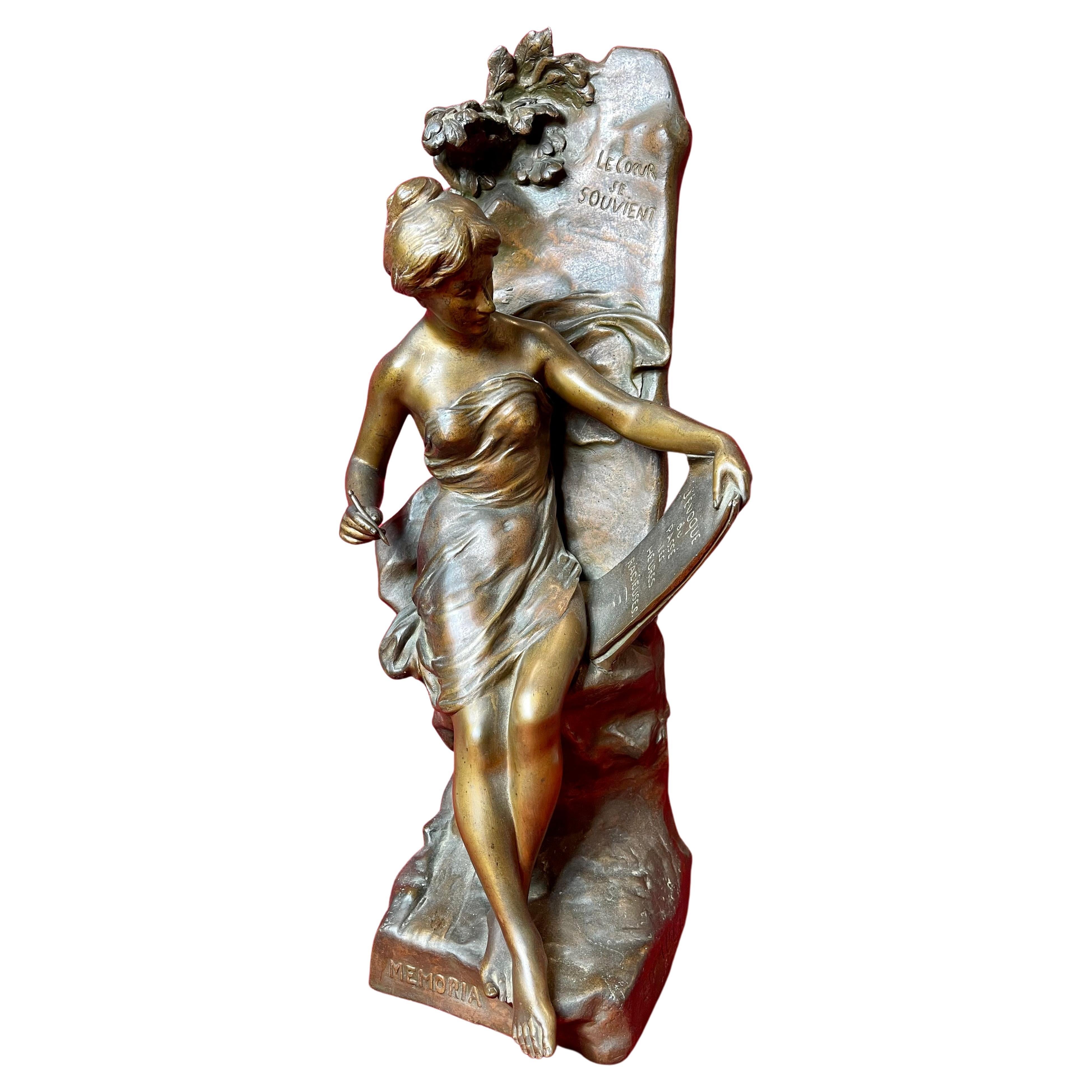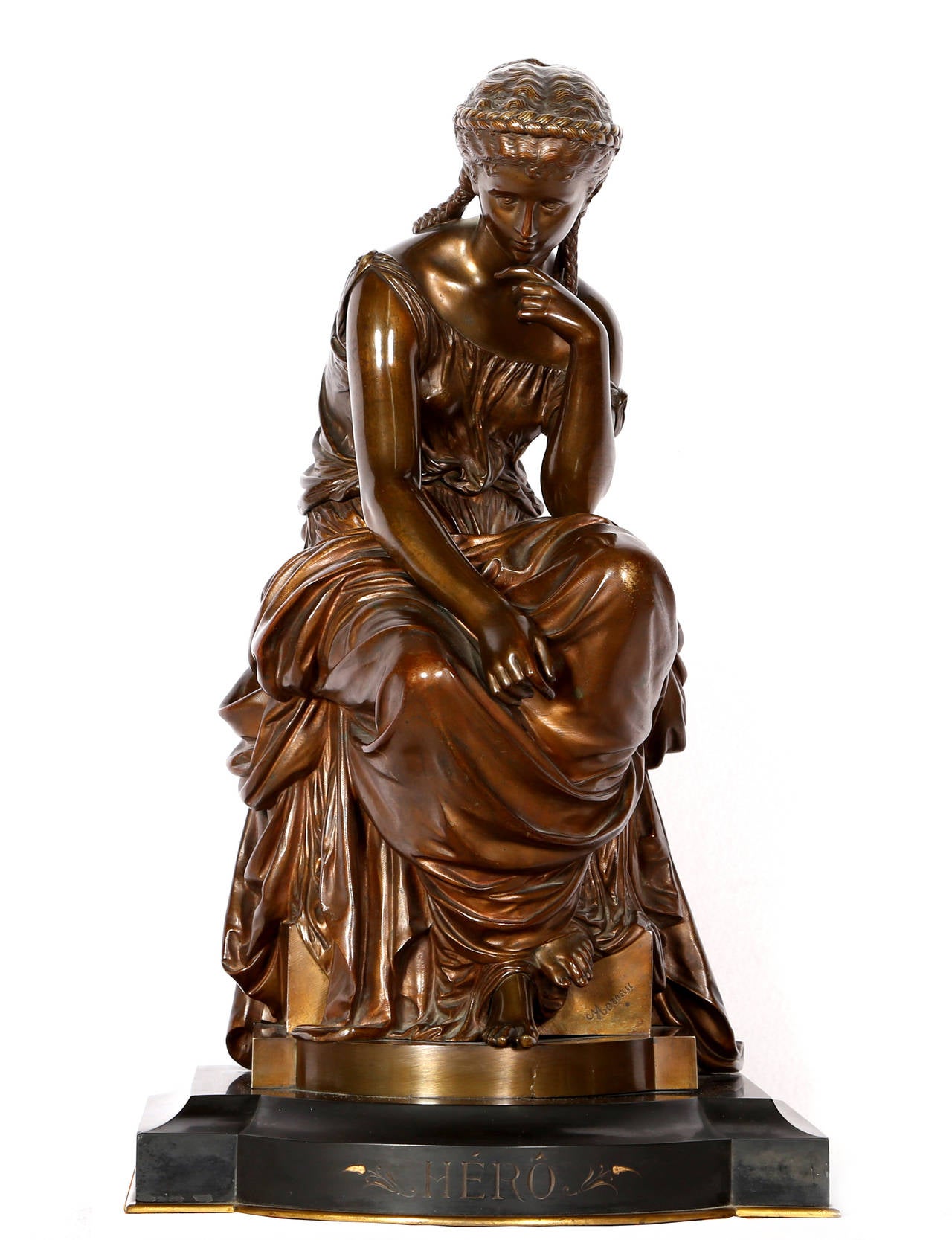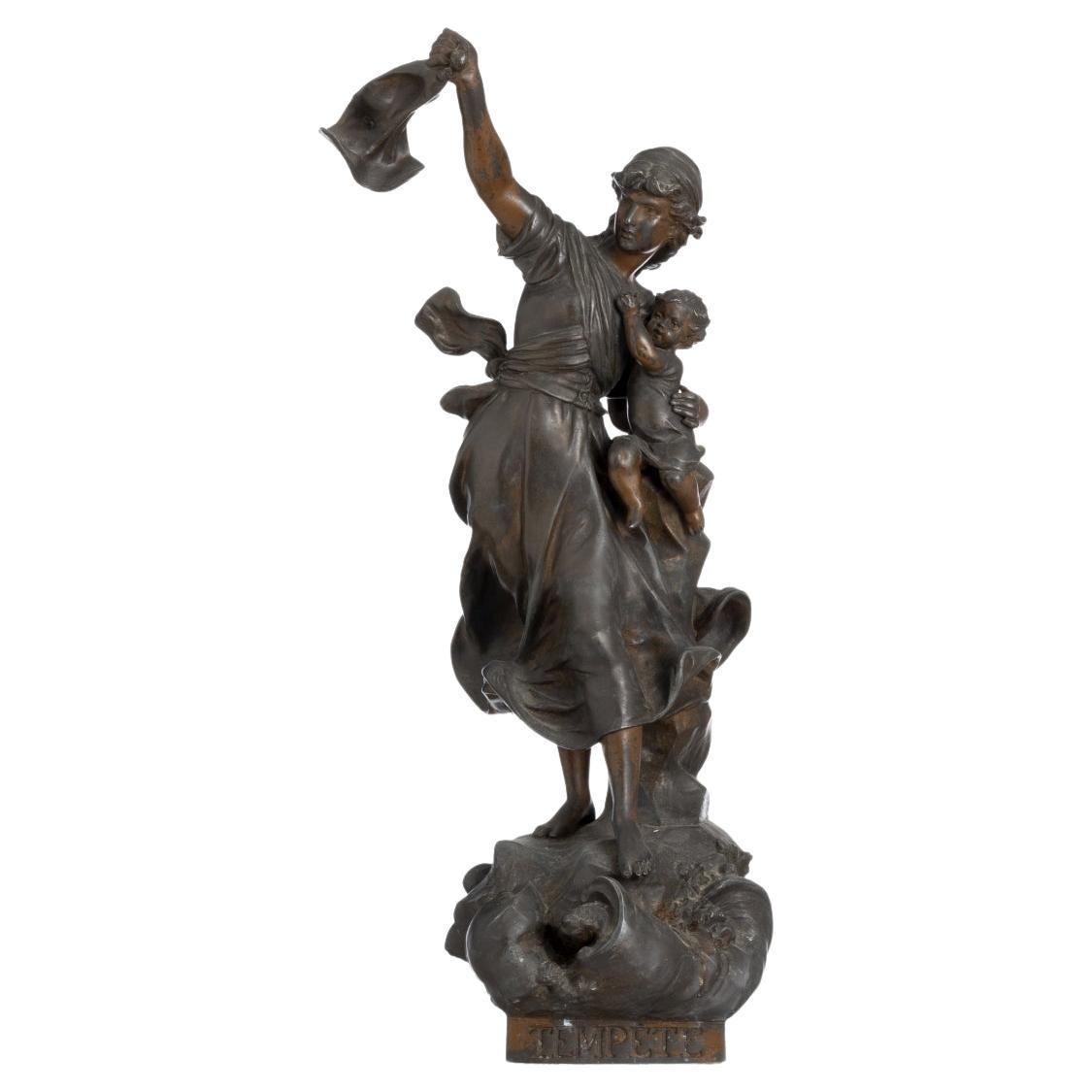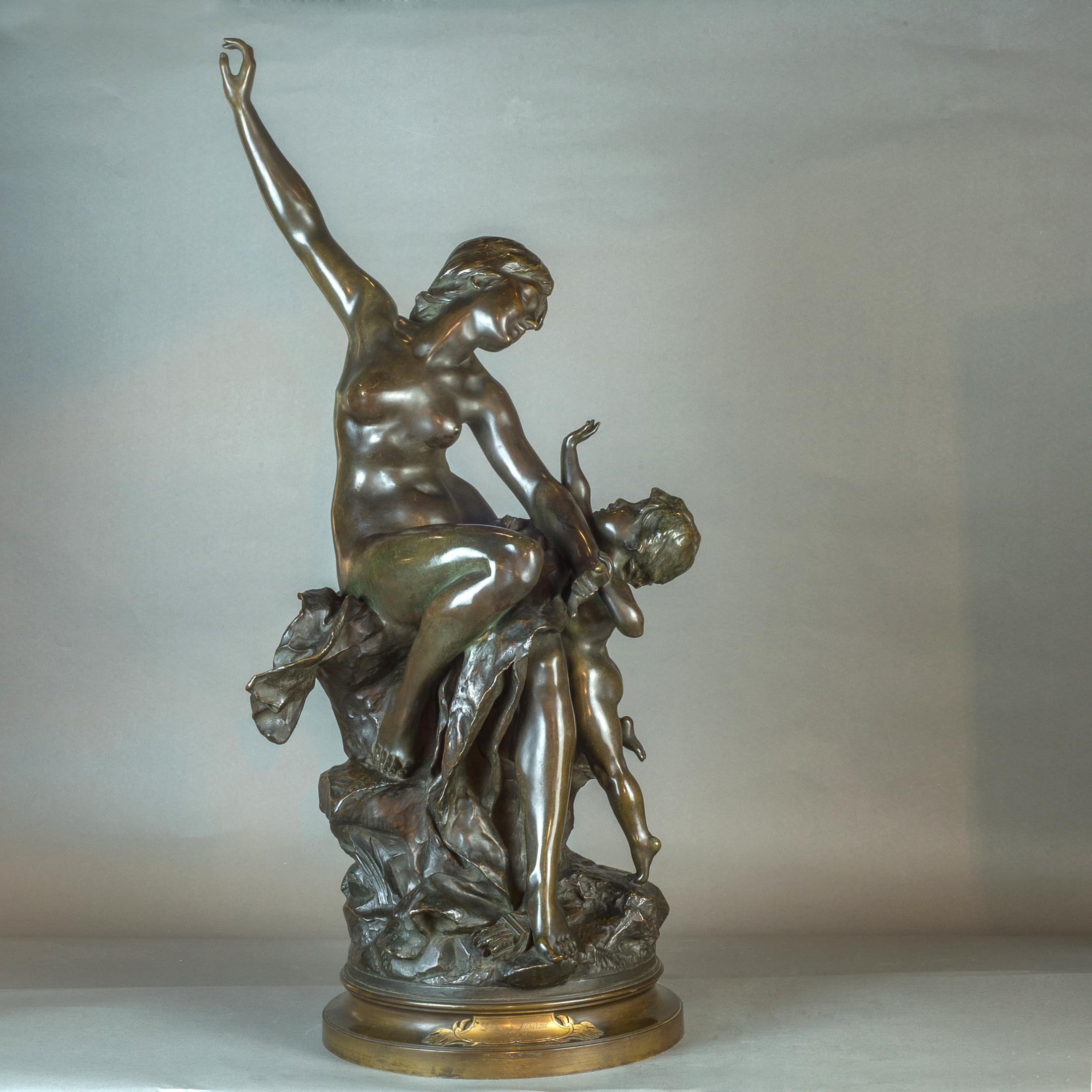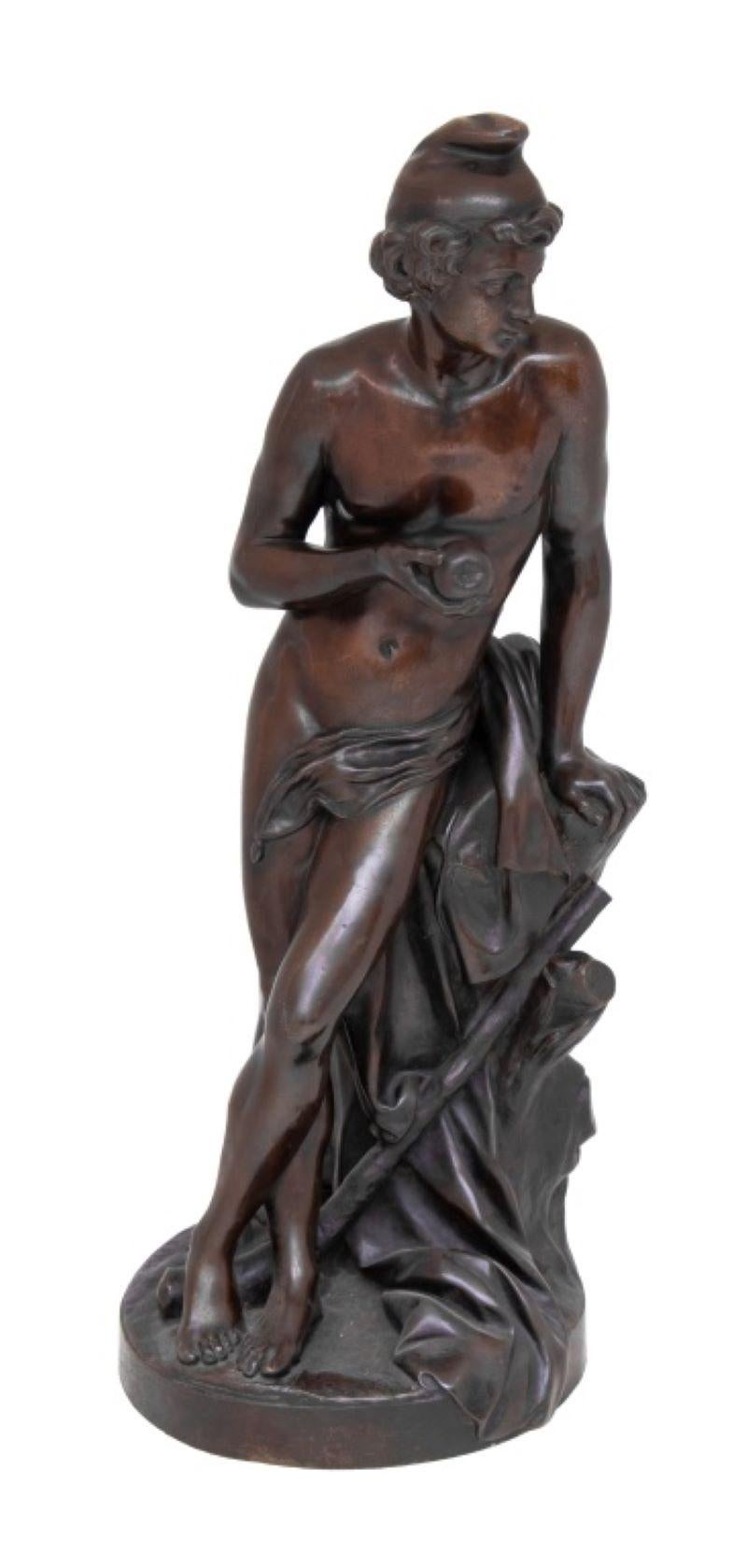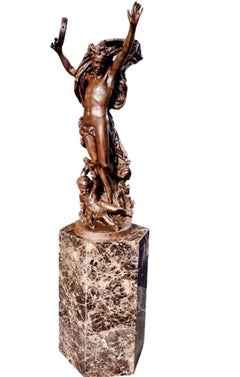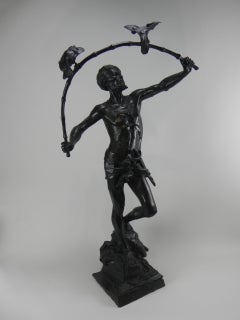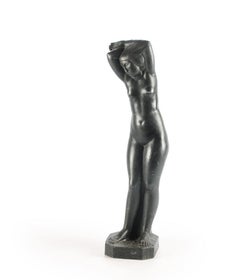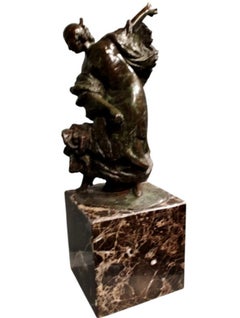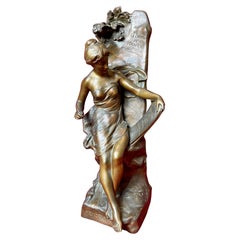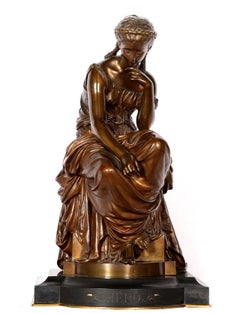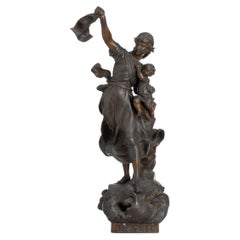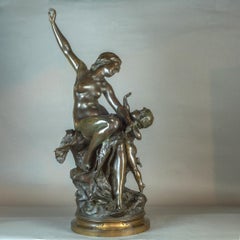Items Similar to Thyl Ulenspiegel et Nele – Reduction of the Monument to Charles De Coster
Want more images or videos?
Request additional images or videos from the seller
1 of 20
Charles SamuelThyl Ulenspiegel et Nele – Reduction of the Monument to Charles De Coster20th century
20th century
$19,156.50
£14,252.25
€16,000
CA$26,688.94
A$29,047.68
CHF 15,249.76
MX$350,938.33
NOK 191,401.44
SEK 180,468.92
DKK 121,827.34
About the Item
Charles Samuel – Thyl Ulenspiegel and Nele (after the Monument to Charles De Coster, 1894) Bronze, marble base, 66 x 61 x 27 cm Cast by Petermann, Brussels A moment of intimacy and defiance, frozen in bronze: Charles Samuel’s reduction of his monumental homage to Charles De Coster distills the heart of a national myth into a chamber-sized lyric. In this smaller version, likely cast shortly after the unveiling of the original in 1894, we encounter the two emblematic protagonists of De Coster’s La Légende et les aventures héroïques, joyeuses et glorieuses d’Ulenspiegel et de Lamme Goedzak, seated close together, sculpted with the same finesse, tenderness, and ideological conviction that marks the full-scale monument on the banks of the Ixelles Ponds. Thyl Ulenspiegel—the rebellious spirit of Flanders—is shown with youthful resolve, his lean figure clothed in simple garb, sword by his side, and his gaze projected outward, into history. At his side sits Nele, his faithful companion and conscience, barefoot and tender, her arm draped around his shoulder, her eyes searching his face in a gesture that is both loving and exhortative. She is not merely a muse or consoler, but the soul of the land—the cœur de la mer de Flandre, as De Coster famously wrote. This poetic inscription appears, too, on the veined green marble base: “...Est-ce qu’on enterre Ulenspiegel, l’esprit, Nele, le cœur de la mère de Flandre?” (“…Do they bury Ulenspiegel, the spirit, Nele, the heart of the mother of Flanders?”) The miniature faithfully reproduces the central sculptural group from the large public monument designed by Samuel in collaboration with architect Franz De Vestel—a bold choice at the time to commemorate not the author’s portrait, but rather his literary characters. The original monument, erected in 1894 in Brussels' Ixelles, was the first public work in Belgium to enshrine fictional figures as national symbols. It expressed in bronze and stone the enduring ideals of freedom, resistance, and the Flemish identity—an embodiment of De Coster's radical humanism and Samuel’s poetic realism. The bronze was cast by the Petermann Foundry, a leading Brussels atelier known for its technical mastery and artistic sensitivity. It was one of several editions made to circulate Samuel’s vision beyond the urban landscape, allowing collectors and institutions to possess a fragment of this cultural legacy. Though the exact number of casts remains uncertain, they were likely issued in limited numbers, each one bearing the hallmark of fine Belgian bronzework. Unlike monumental sculptures that tower or command from pedestals, this version invites closeness. Its scale lends it the intimacy of a scene witnessed in secret—an ode to heroism whispered rather than shouted. Every fold of Nele’s dress, every tension in Thyl’s brow, is a testament to Samuel’s meticulous modeling and narrative instinct. He offers not an allegory but a living tableau: le peuple en bronze. This piece is more than a decorative object—it is a portable monument, a condensed national myth cast in the noblest material. It speaks of liberty, love, and the moral clarity of storytelling in turbulent times.
- Creator:Charles Samuel (1862 - 1938)
- Creation Year:20th century
- Dimensions:Height: 24.02 in (61 cm)Width: 25.99 in (66 cm)Depth: 10.63 in (27 cm)
- Medium:
- Movement & Style:
- Period:
- Condition:
- Gallery Location:Gent, BE
- Reference Number:1stDibs: LU2140216137942
About the Seller
5.0
Vetted Professional Seller
Every seller passes strict standards for authenticity and reliability
Established in 2018
1stDibs seller since 2022
6 sales on 1stDibs
Typical response time: 2 hours
- ShippingRetrieving quote...Shipping from: Gent, Belgium
- Return Policy
Authenticity Guarantee
In the unlikely event there’s an issue with an item’s authenticity, contact us within 1 year for a full refund. DetailsMoney-Back Guarantee
If your item is not as described, is damaged in transit, or does not arrive, contact us within 7 days for a full refund. Details24-Hour Cancellation
You have a 24-hour grace period in which to reconsider your purchase, with no questions asked.Vetted Professional Sellers
Our world-class sellers must adhere to strict standards for service and quality, maintaining the integrity of our listings.Price-Match Guarantee
If you find that a seller listed the same item for a lower price elsewhere, we’ll match it.Trusted Global Delivery
Our best-in-class carrier network provides specialized shipping options worldwide, including custom delivery.More From This Seller
View AllThe Spirit of Dance – Monumental Bronze Sculpture by Jean-Baptiste Carpeaux
Located in Gent, VOV
Three years after surprisingly winning the commission for the Paris Opera House—today known as the Palais Garnier—Charles Garnier entrusted one of the four major sculptural groups fo...
Category
20th Century Nude Sculptures
Materials
Bronze
Auguste DE WEVER (1836-1910) Hindu Birdcatcher
Located in Gent, VOV
Hindu Birdcatcher
A fine quality, a nineteenth-century bronze cast of the Hindu bird-catcher standing on an elephant skull and holding two birds in the air which are sitting on a bambu stick by Auguste De Wever (Belgian 1836-1910). Old cast probably by the Compagnie des Bronzes foundry signed...
Category
19th Century Figurative Sculptures
Materials
Bronze
Jeune Femme Debout, les Bras sur la Tête – Bronze by Henri Parayre (1879-1970)
Located in Gent, VOV
Henri Ernest Parayre’s Jeune femme debout les bras sur la tête is a striking embodiment of early 20th-century French sculpture, seamlessly blending classical inspiration with the eme...
Category
Early 20th Century Nude Sculptures
Materials
Bronze
Danseuse de Flamenco – Bronze by Joanny Durand (1886–1955)
Located in Gent, VOV
This captivating bronze sculpture by French artist Joanny Durand (1886–1955) depicts a flamenco dancer in mid-motion, her body swirling with grace and energy. The composition capture...
Category
20th Century Art Nouveau Figurative Sculptures
Materials
Bronze
Extreme Effort - Powerful Bronze Sculpture by Alfredo Pina (1883-1966)
Located in Gent, VOV
Alfredo Pina’s Extreme Effort (Le Suprême Effort) is a striking bronze sculpture that embodies the raw struggle of human perseverance. This expressive work portrays a muscular male f...
Category
Early 20th Century Modern Nude Sculptures
Materials
Bronze
Vimar Auguste (1851-1916)+bronze, Bohemian horse and monkeys
Located in Gent, VOV
Bohemian horse and monkeys
As early as 1900, Vimar started to create sculptures. His reputation as an illustrator and painter was at its peak.His sculp...
Category
Late 19th Century Naturalistic Figurative Sculptures
Materials
Bronze
You May Also Like
Emile-Louis Picault, Bronze 'Memoria' or the Heart Remembers
By Émile Louis Picault
Located in Beaune, FR
Bronze with brown patina entitled "Memoria" or Le Coeur se Souvient by Emile-Louis Picault. This bronze is in good condition.
Category
Antique 19th Century French Figurative Sculptures
Materials
Bronze
Hero, Art Nouveau Bronze Sculpture by Moreau
By Hippolyte François Moreau
Located in Long Island City, NY
Artist: Hippolyte Moreau, French (1832 - 1927)
Title: Hero
Medium: Bronze Sculpture on Marble Base, signature inscribed
Size: 19 x 11 x 9 in. (48.26 x 27.94 x 22.86 cm)
The tale of ...
Category
Early 20th Century Romantic Figurative Sculptures
Materials
Bronze
Virgile Morey (act.1883-1895)
Located in Porto, PT
"Tempete". Bronze art sculpture. Signed.1500 Height: 54 cm
Category
Antique 19th Century French Figurative Sculptures
Materials
Bronze
French Bronze Sculpture Statue by Alexandre Dercheu
Located in New York, NY
JULES-ALFRED-ALEXANDRE DERCHEU
French, (1864-1912)
L'Amour Désarmé
A nude girl holding Cupid away with her left arm, her left foot on his quiver, on a circular base, seated on a ro...
Category
1890s Figurative Sculptures
Materials
Bronze
Émile Louis Picault Bronze Sculpture
By Émile Louis Picault
Located in Astoria, NY
Emile Louis Picault (French, 1833-1915) "Paris" Patinated Bronze Sculpture, late 19th century, the standing figure holding a golden apple, signed to base. 32" H x 12" W x 12" D. The ...
Category
Late 19th Century Art Nouveau Figurative Sculptures
Materials
Bronze
Caress of Love
By Albert-Ernest Carrier-Belleuse
Located in PARIS, FR
"Caress of Love"
by Albert-Ernest CARRIER-BELLEUSE (1824-1887)
Bronze group sculpture with a nuanced dark brown patina
Signed on the back "A. Carrier-Belleuse"
Reposing on its orig...
Category
1870s French School Figurative Sculptures
Materials
Bronze
More Ways To Browse
Art Nouveau Marble Sculptures
Annet Stirling
Art By Bankrupt
Art By Krull
Atilla Tivadar
Aztec Sculpture Mosaic
Banksy Bearbrick
Bear Sahara Novotny
Bertoni 1949
Bill Mack Bonded Sand
Black Panther Light
Boxing Boots
Brett Kern
Bronze Banjo Player
Bronze Bastet Cat
Bronze Mountain Lion
Bronze Western Indian Art
Cafe Florian
